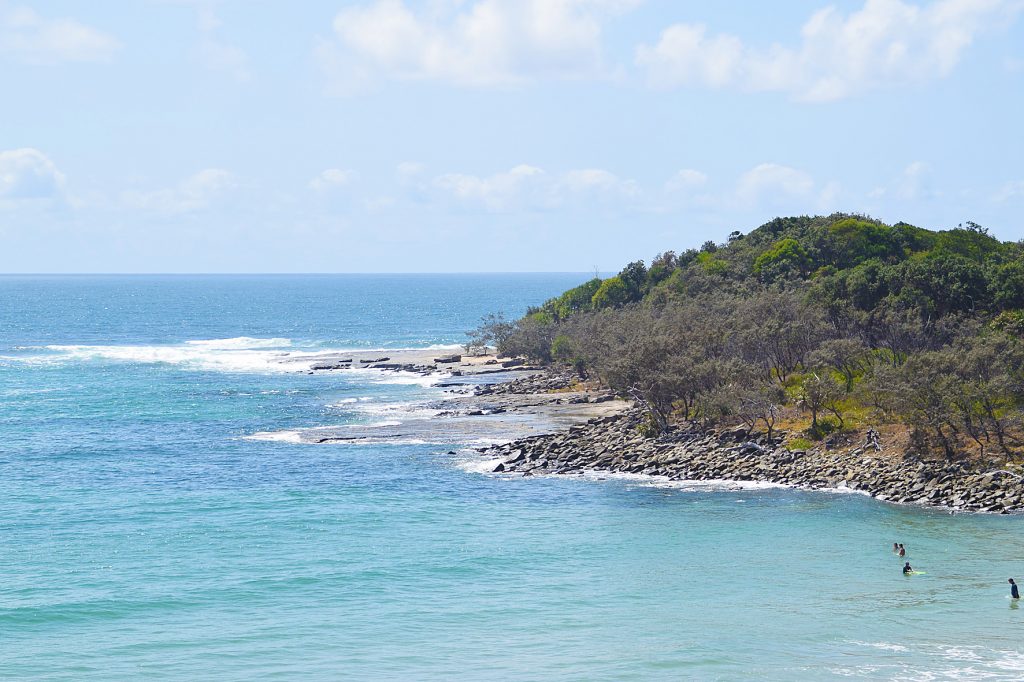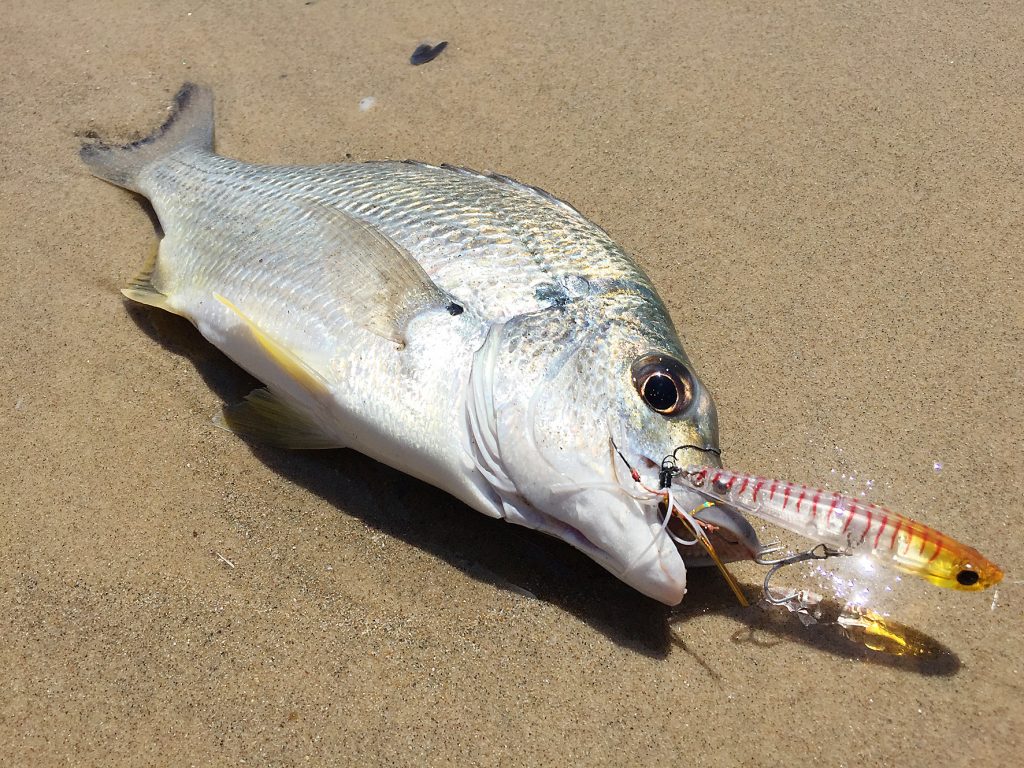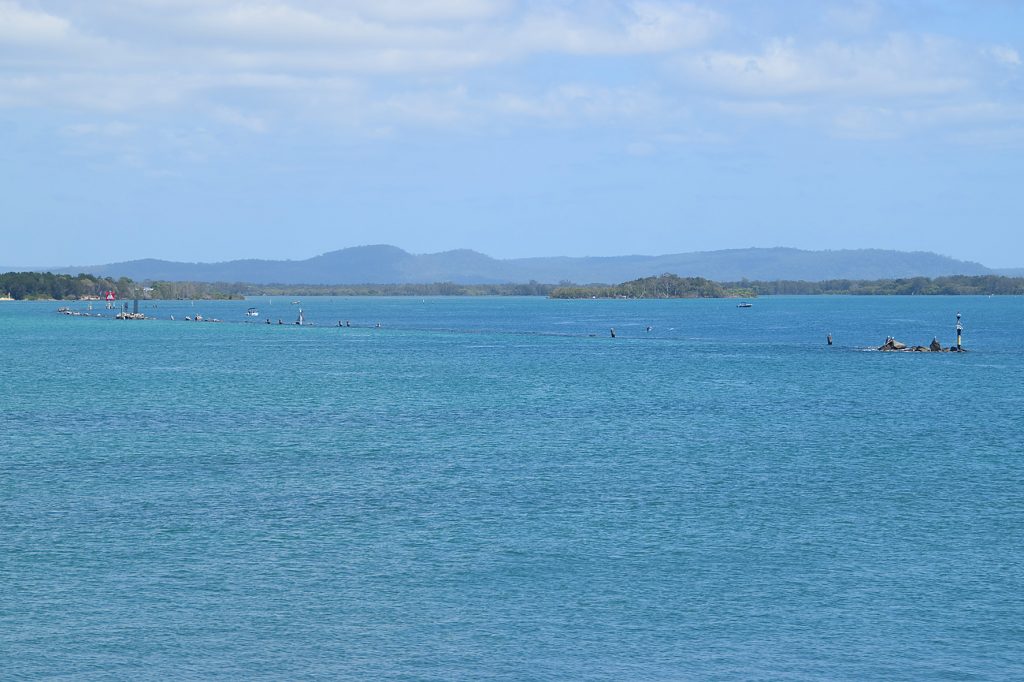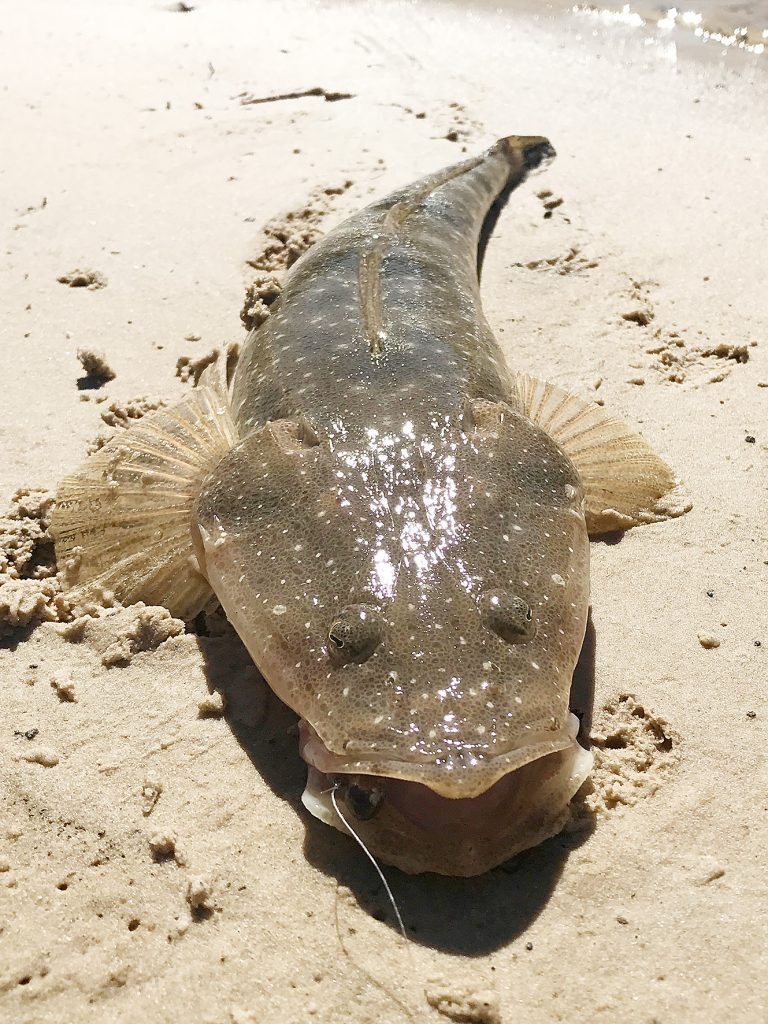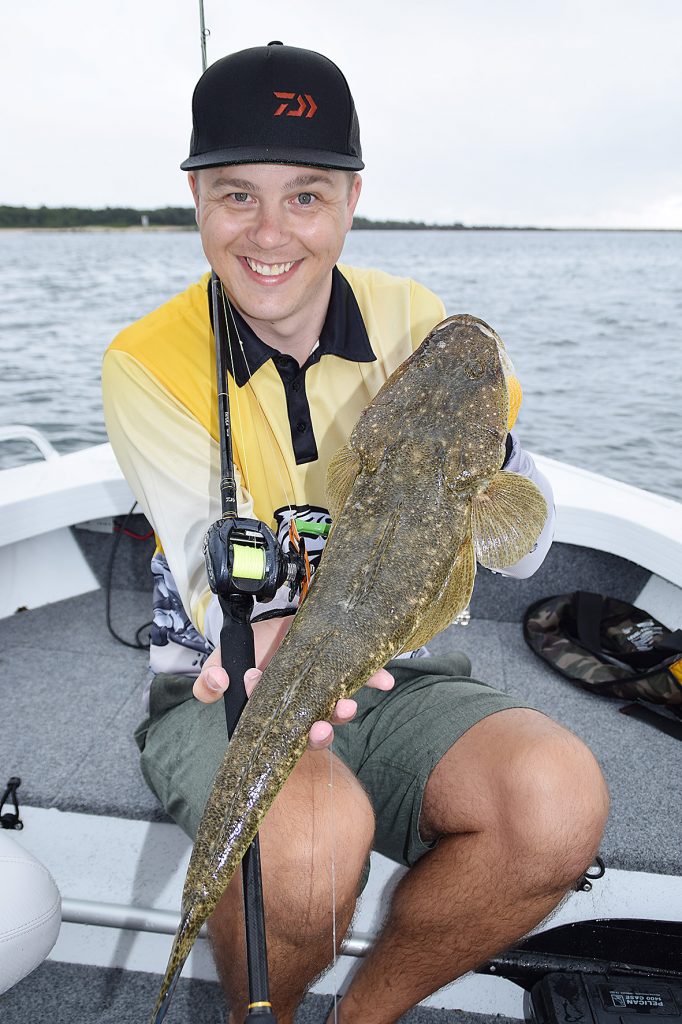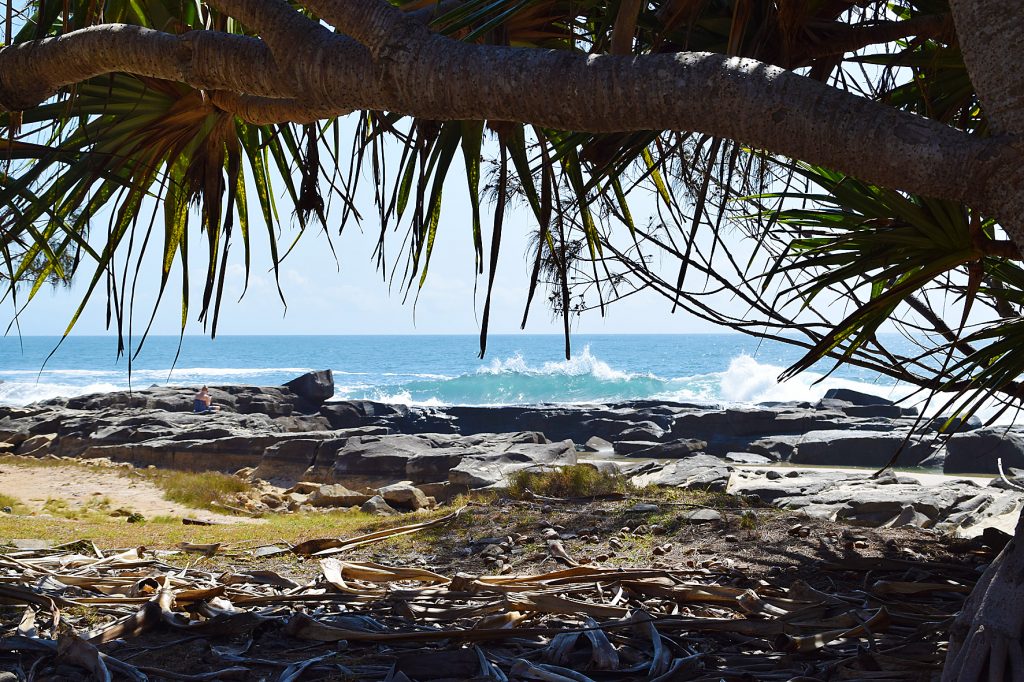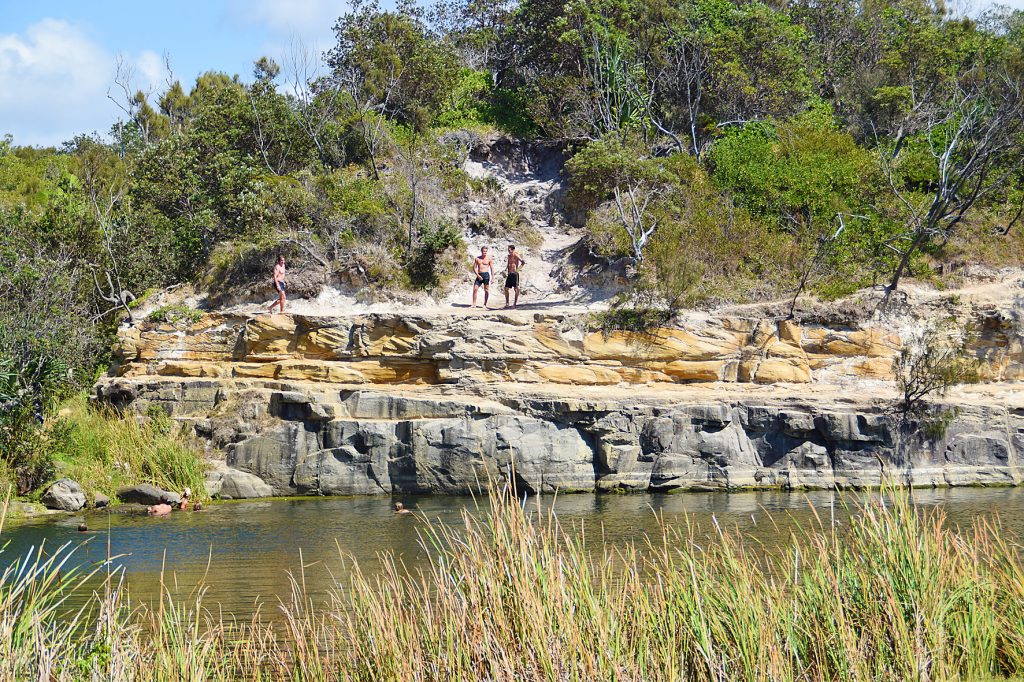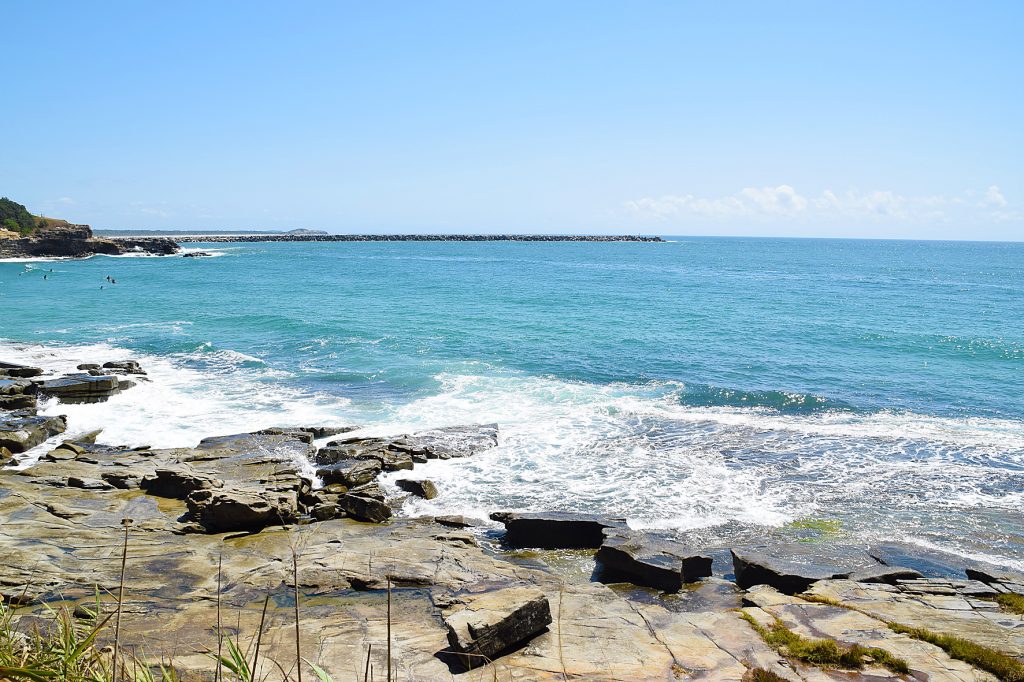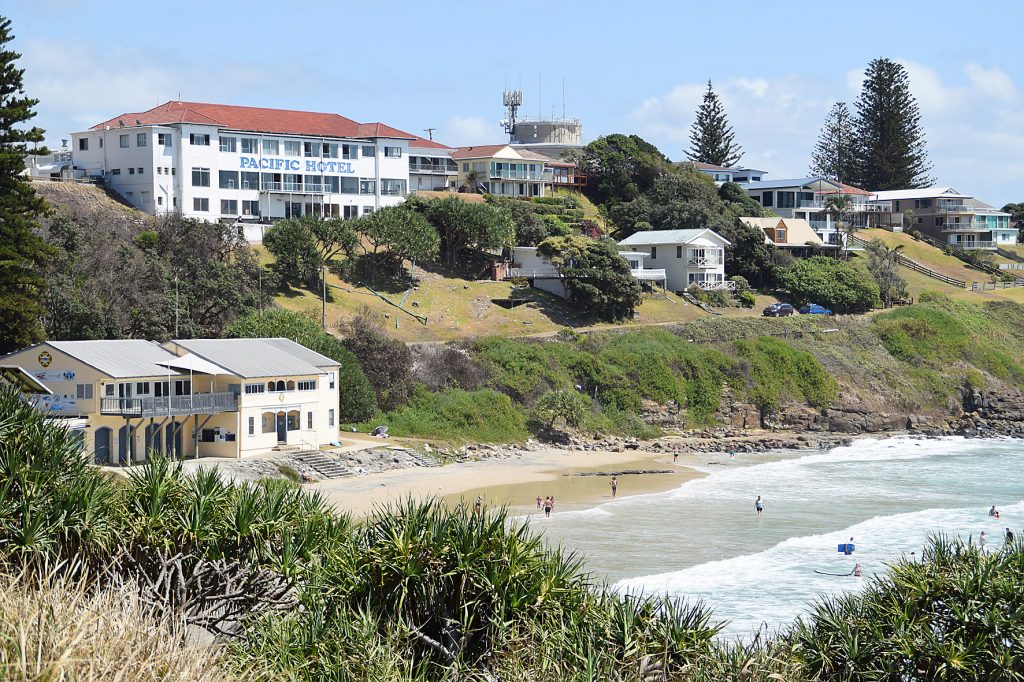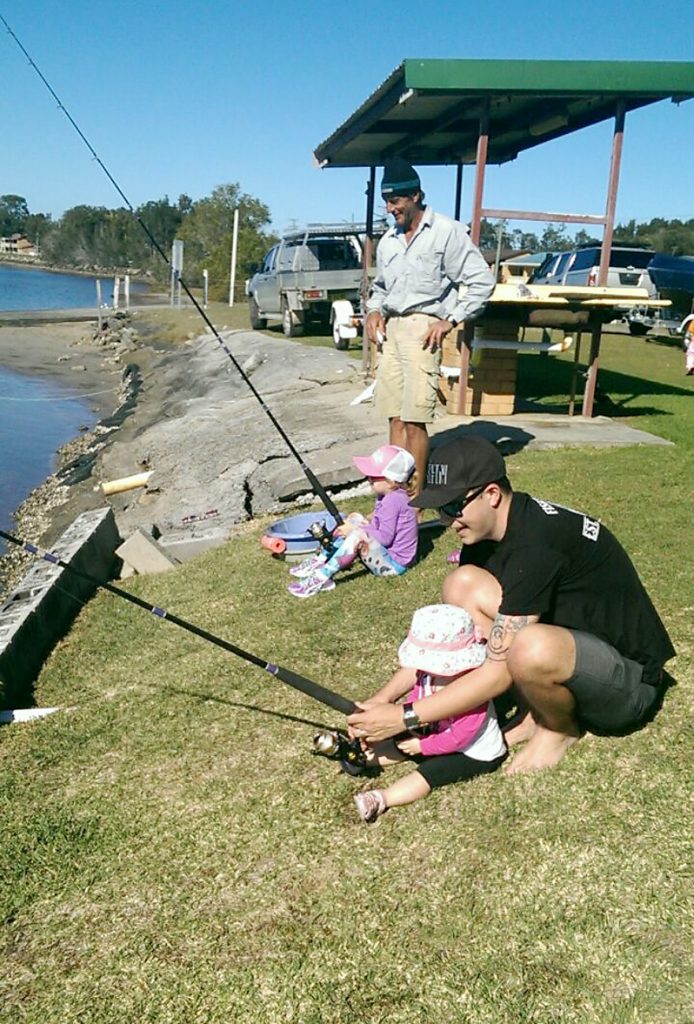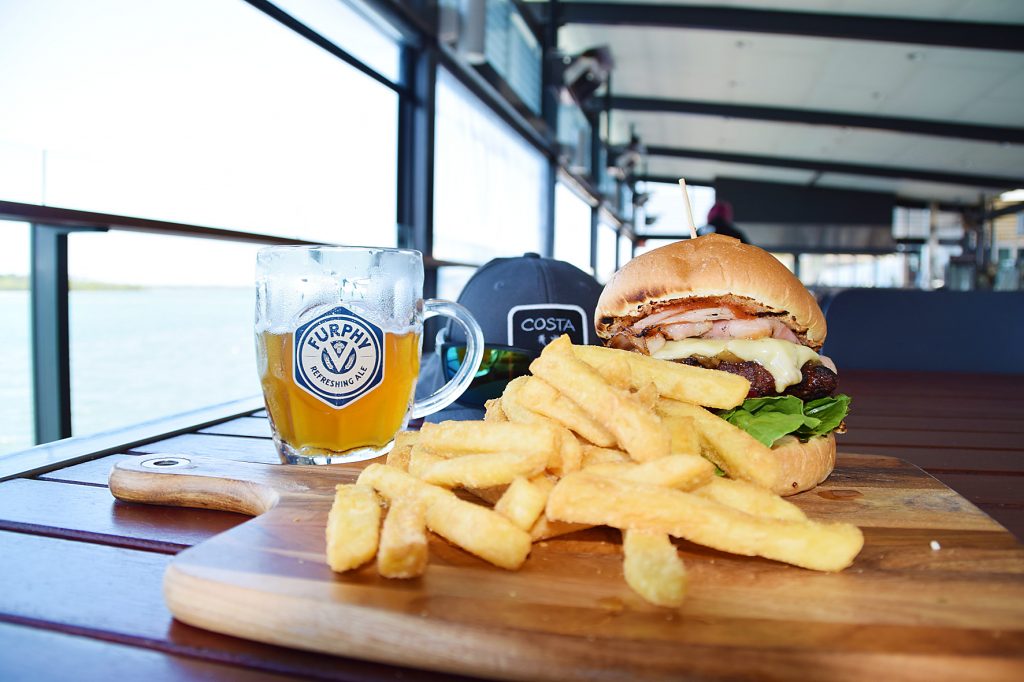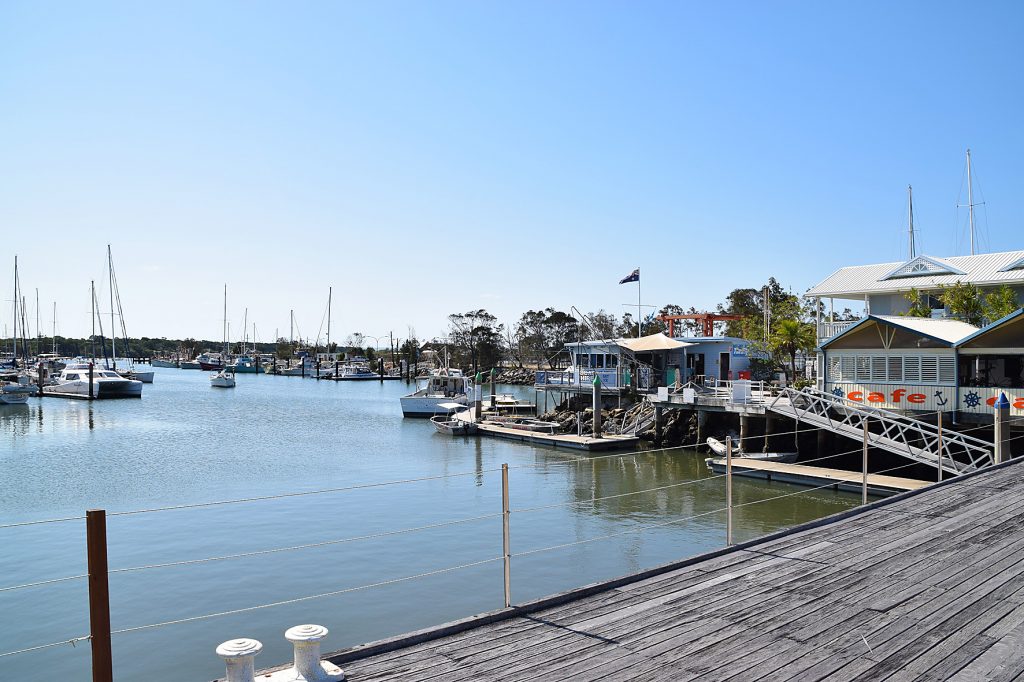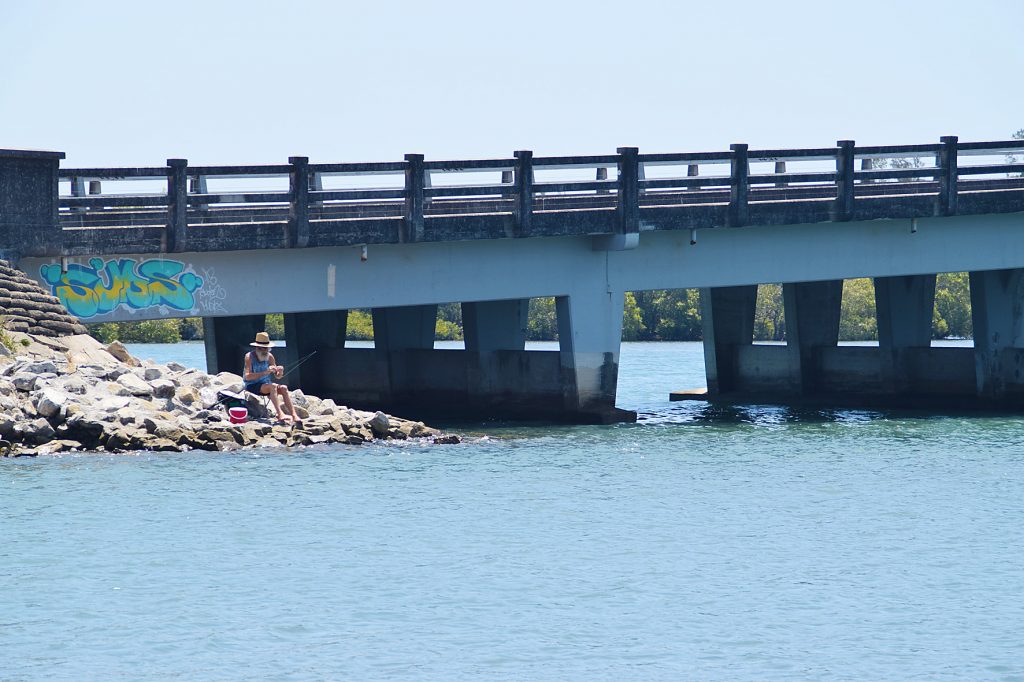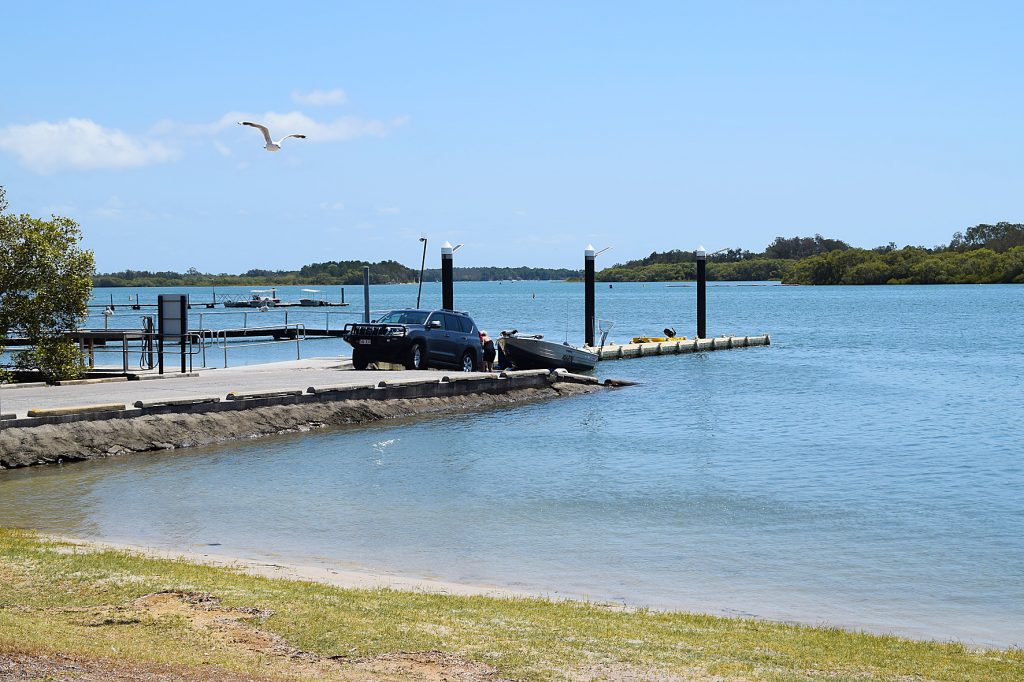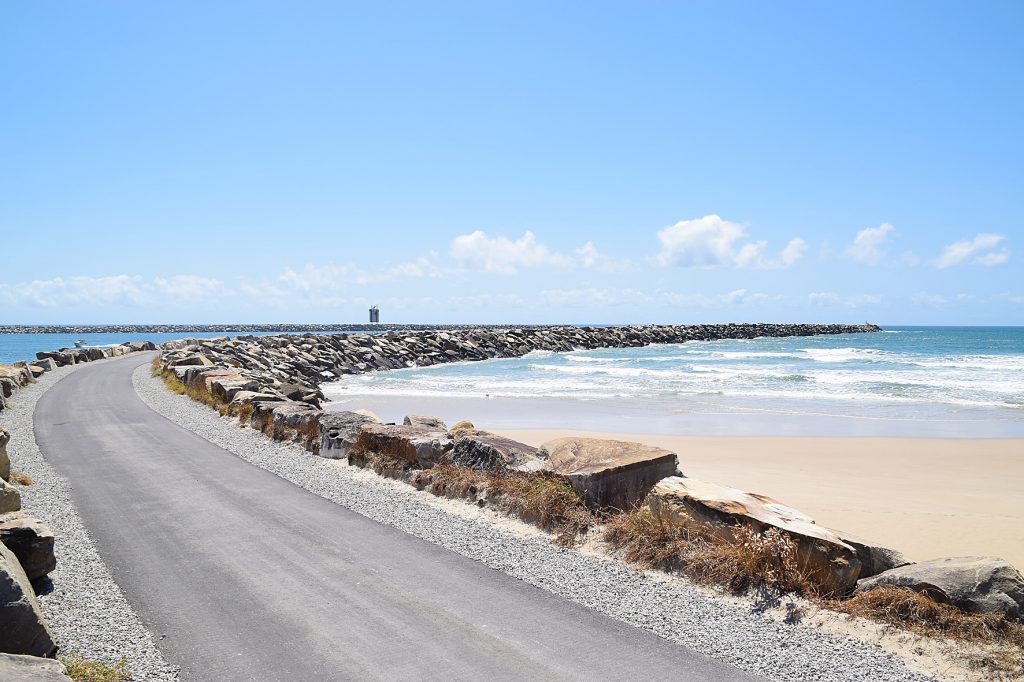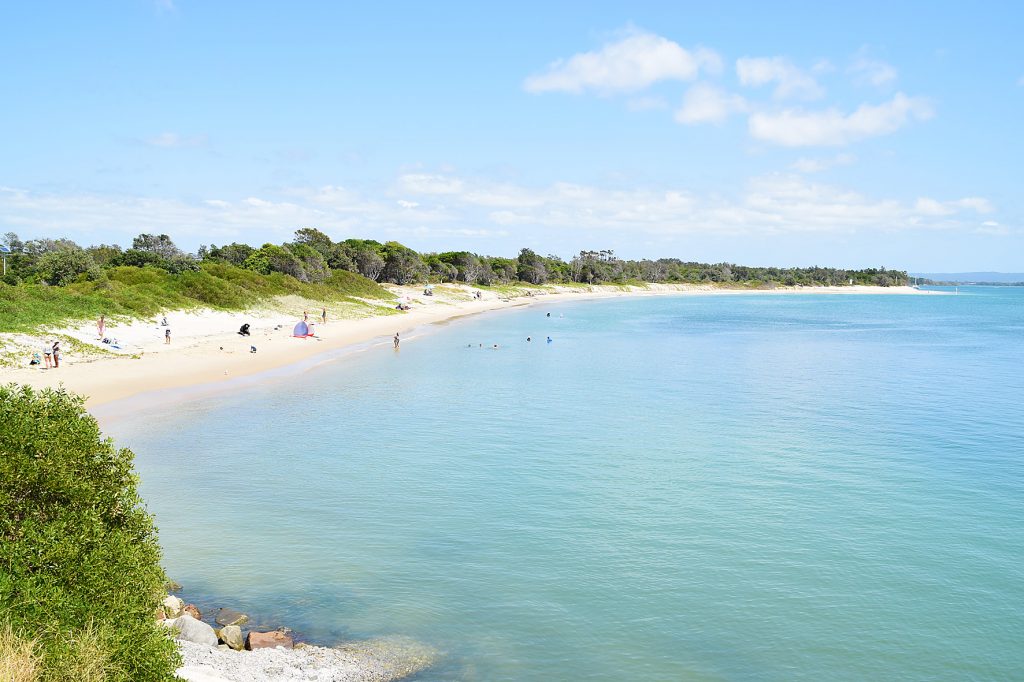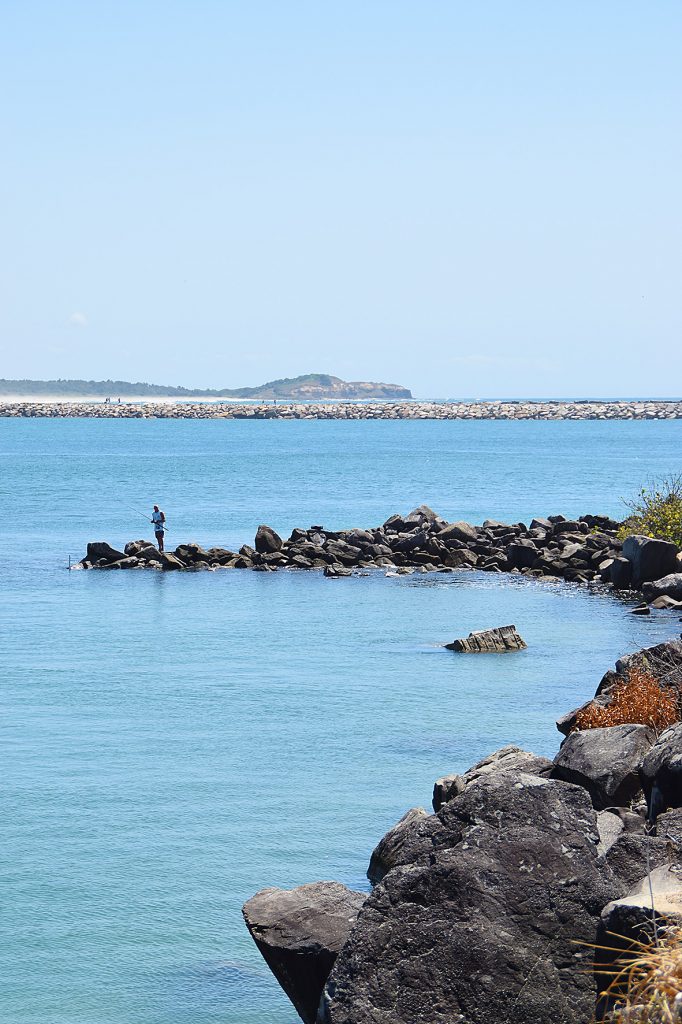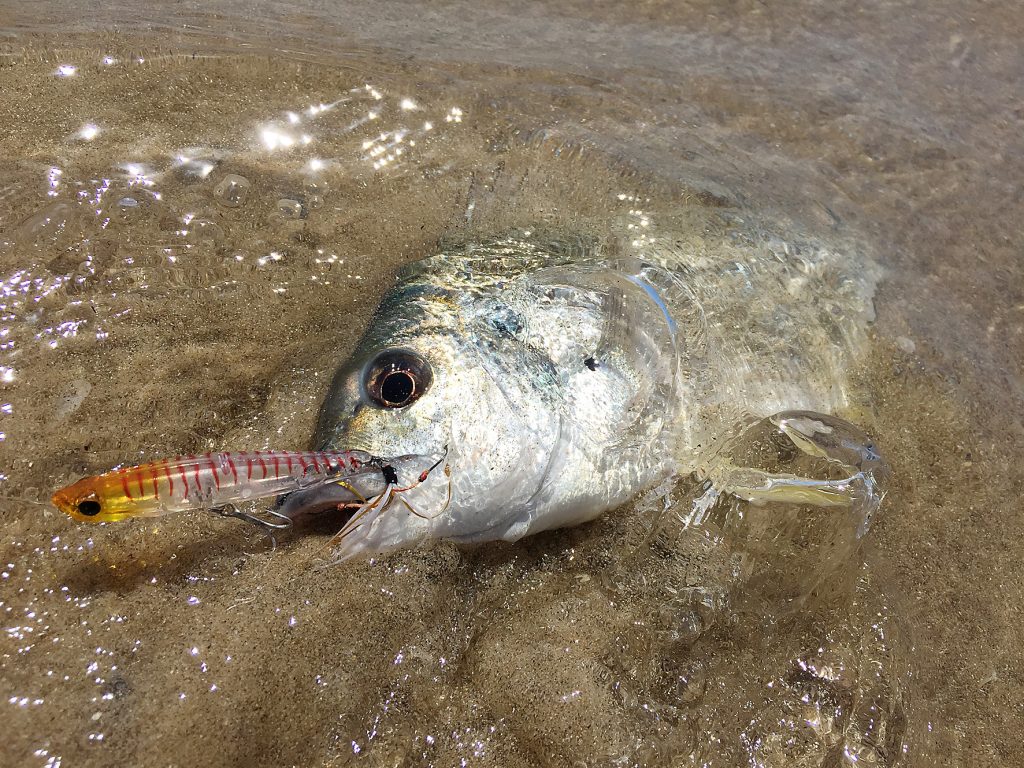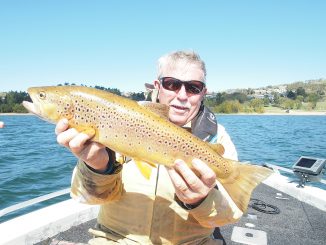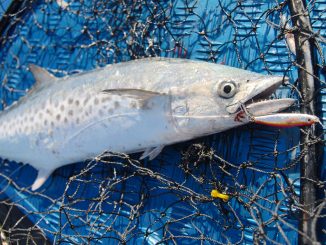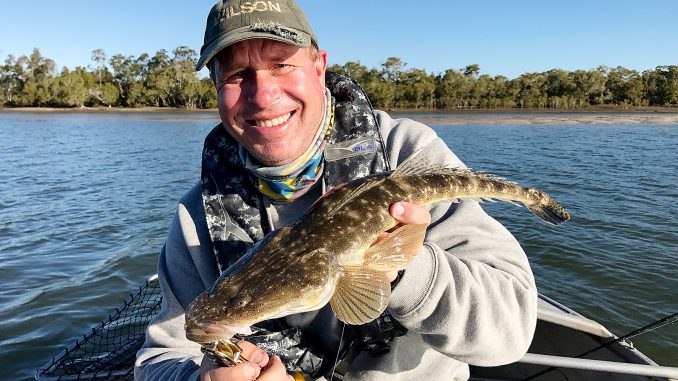
by Rupe •
I was talking to my wife recently about how I’d love to start taking our three young daughters to Yamba more often. Rambling about why I love the place so much, I realised it has now ticked over 30 years that I’ve been visiting this beautiful coastal paradise, and yet I’m still keen to spend more time there!
Growing up on the western side of the Great Divide with a dad that had a fishing rod in my hand at almost every available opportunity meant that plenty of long weekends and school holidays were spent on the coast, where we could both chase new species, in new locations, utilising new methods.
Because it was only a 3 hour-ish drive from my old home town of Glen Innes, its sleepy nature, and I’m sure the affordability of its accommodation options, many of those holiday periods were
spent on the banks of the mighty Clarence River in Yamba.
A little bit of history
Originally established in the 1830s as a timber harvesting town, it wasn’t long before people were living off the land and the water too, with excellent seafood and sugar cane growing conditions. In 2019, commercial fishing and sugar cane are still very strong industries in the region – even if the gantry wall where the trawlers rest between trips is a little emptier these days than during the 90s.
If you were to drive into Yamba tomorrow, the council sign will tell you its population has grown to over 6000 people now, but this was certainly not the case when I was a pup in the late 1980s. Back then the population was about half of what it is now, and it certainly felt that way. Perhaps I’m remembering through rose-coloured glasses, or amber liquid coloured glasses as I slurp my Great Northern and type this out…
Despite the growth in population, Yamba still doesn’t feel too busy or over-run by tourists, or taken over by big business. It’s still a sleepy town full of anglers, surfers, cane farmers and their families.
Because of the mild climate and predominantly flat residential areas, it’s also become a hotspot for retirees, so as long as you don’t cut in line at the chemist you shouldn’t have too much trouble from the locals.
Perhaps more important than the population of people, especially for this exercise in a magazine titled Fishing Monthly, the rivers and offshore remain chock full of fish for you and I to catch! The underwater population may not have doubled in the last 30 years, but it’s still really healthy and always changing.
The Clarence River itself is almost 400km of sprawling waterway, and it’s home to some of the most exciting and desirable fresh and saltwater species you could ever hope to encounter. It runs into the Pacific Ocean quite powerfully between the rock walls that now stand guard over the towns of Iluka and Yamba.
The amount of water that flows in and out of this place with each change of tide is truly something to behold.
Catching fish in and around Yamba can be as simple or as complex as you see fit. Everybody from the weekend warrior family with a couple of packets of servo prawns, a quiver of Big-W combos and a dream, right through to the ABT Tournament anglers who happily lost thousands of dollars of Cranka Crabs in one weekend can have a super time catching big fish in the Clarence Basin.
If you’ve spent any time reading Fishing Monthly’s regular local area report for Yamba you will have seen the almost endless list of species you are likely to encounter, either in the river itself or offshore if you venture outside the bar.
Eternal favourites like bream, flathead, mulloway, whiting, mangrove jack and luderick are abundantly available to boaters, kayakers and land-based anglers on the river year round. Although there are certainly particular seasons when you are more likely to catch a certain type of fish than others.
If you’re hoping to nail a new PB of one of those species, my recommendation would be to plan ahead, call one of the excellent tackle stores in town and let the experts walk you through. All of them are owned and run by local people who have their ears to the ground and toes in the water, and from my experience they are only too happy to pass on their extensive knowledge and offer quality advice.
They also stock all the big brands between them, so if you’re needing a top-up on gear, support the guys who will put you onto the fish!
PRIME LOCATIONS
While the whole area is full of fish, there are some easy to find and access areas that would be great places for you to start.
I’ll list a couple of spots for each type of fishing to get you started, but don’t be afraid to just have a drive around and look at the water. If it looks fishy, it probably is!
The upside of these spots? People have been fishing them for years and they keep producing.
The downside – they’re so well known that it can sometimes become a little crowded, so you might have to move on to plan B or C to find some space to fish and relax, especially during peak tourist times.
Beach Fishing
If you’re keen to hit the sand with your favourite Alvey and 10 feet of fibreglass in hand, then boy oh boy does Yamba have some options for you!
Expansive beaches to the south of the township running right down to Angourie and beyond offer endless gutters and drains that consistently produce all the usual suspects, but especially big mulloway, tailor and salmon.
Casting big lures at Shelley Beach on first light was always atop the old man’s list of things to do on our regular pilgrimages, and remains so even though he lives there permanently now!
If the swell is too big or the wind is wreaking havoc outside the dunes, you can still get sand between your toes and catch a sensational bag of fish by heading to the appropriately named Whiting Beach, which is tucked just inside the river mouth almost directly behind the main street on the northern end of Hickey Island. This is perhaps the most kid-friendly option too, so keep that in mind if you’ve got little tackers wanting to tag along.
If you’re using bait, always try to catch your own if you can. Beachworms, yabbies and pipis will serve you well. If you can’t get those, mullet strips and pilchards work too.
Rock Fishing
Whether you want to stand on a naturally occurring bit of rock or one that was placed there with a crane, the good news is that Yamba has plenty of both, and they’ve been there so long that they’ve become fish magnets.
Natural and artificial rocky structures offer the whole food chain an opportunity. The trouble for some links in that food chain is that there’s a bigger, toothier link waiting to eat you!
The walls and ledges are home to so many schools of baitfish and crustacean species, it’s inevitable that the big boys want to hang around there too. This is where your advantage as an angler comes in.
You can fish with bait or lures and you don’t have to move too far. With so much water movement each day at the lower reaches of the Clarence, you can find a nice safe spot to stand and wait for the fish to come to you.
If you’re a land-based rock angler I’d recommend hitting Lovers Point (if the swell allows) or fishing either the gantry wall or the spot known as the T-Piece. If you need some help getting to those points, either take my earlier suggestion and hit the tackle shops once you get to town or jump on to Google Earth and make yourself familiar that way.
If you have access to a boat or kayak, head to one of the many boat ramps around town and take yourself towards Middle Wall. There is a lot of water movement around Middle Wall though, so make sure your electric motor batteries are charged or you’ve got a decent anchor.
If you’re a lure fisher, have a selection of metal slugs, soft plastics and shallow-mid diving hardbodies. If bait is your caper, it’s hard to find a fish that won’t eat fresh caught rock crabs. Just watch your fingers when collecting, and have band-aids in your backpack just in case.
Clarence River by land
As you’d expect, the bulk of the river as you head upstream is lined by thick clusters of mangroves, but there are still some relatively easy spots to access where you can find a mixed bag of fish.
You’ll need to pay a little more attention to tides if this is your chosen method of attack, but you can almost always find a nice pocket of land to stand on. There’s usually somewhere close by to source bait, whether that be yabbies or worms, which for me are as good as you can get for this type of fishing.
If you keep a sharp eye out you will spot a few of the more popular spots as you leave the Pacific Highway and take the short drive into the town itself, but in case you don’t, check out the Oyster Channel bridge, Romiaka Channel and a couple of nice little openings on Micalo Road for starters. All of these places are generally teeming with fish and are nice flat areas to fish from.
These are the type of areas where you’re likely to have a session of a lifetime throwing Sugapens and Bent Minnows at big whiting, or find yourself hooked up and in a dog fight with a flathead the size of a garden shovel, like the one Peter Jung is holding on the June 2019 NSW cover.
Hang on tight and try not to blow it!
One final bit of advice when fishing around mangroves: don’t forget the Aerogard.
Clarence River by kayak
When I first started visiting and fishing around Yamba, kayaks were almost non-existent. The closest thing you might have seen was an old fibreglass Canadian style canoe, but they looked more out of place than a vegan at Casino Beef Week.
Fast forward to 2019 and kayaks are everywhere! There’s even a Hobie shop just down the road (or up the river) at Maclean.
There are many factors behind this – affordability, manoeuvrability, and huge advances in comfort and stability are just a few. Even though you can access the estuary in plenty of places in a boat, it just doesn’t compare to being able to pull the car over on the side of the river and be paddling and fishing in minutes, away from the crowds and without having to wait while some peanut makes 29 attempts to get his trailer straight on the boat ramp.
Add the stealth factor for a kayak into the equation, and you’re well on your way to landing a monster mulloway, flathead or whatever else you might be chasing.
If you do decide to launch further upstream, try around Oyster Channel or Romiaka around Thorny Island. There’s plenty of water for you to explore without blowing out your arms or legs paddling/pedalling before you get a cast in. Endless drains and sand flats will put you in prime position to have your rod bent in no time.
Clarence River by boat
If you have a boat, or access to a boat, you’re going to have a good time!
With so many options on how to fish and where, your biggest battle might be deciding where to start.
As you head upstream from the mouth you’re presented with almost endless opportunities to catch fish. You can troll lures along the walls, throw plastics into draining gutters, work topwater lures across expansive flats for whiting or pull up and drop an anchor among one of the many islands you’ll find along the way.
My tip here is to drop the boat in early in the morning, fish from Freeburn Island up to Harwood around Ulgundahi Island. There’s so much water up that way that no matter how you like to fish, you’ll find something to accommodate your style.
Stay as long as you can or until the fish stop biting, then pull the tinny up to the famous Yamba Tavern and grab yourself a feed and a coldie.
As the saying goes – that’s livin’!
BIG BLUE
If the river or fishing from the rocks/beach don’t tickle your fancy, don’t fret. The offshore fishing here is off its head too!
Year round you’ll find fantastic snapper and pearl perch fishing without having to venture too far off the coastline. Depending on the season and the current, you’re also likely to come across mackerel, mahimahi, wahoo, trag, mulloway and even the occasional gummy shark.
My uncle runs a fleet of charter boats out of Yamba and I’m often amazed at the numbers, size and variety of fish that come aboard his boats and make appearances on Facebook and on the pages of Fishing Monthly. Most of the anglers on the charters are novices and they still slay.
Just imagine what an angler with YOUR skill level could do. Mind. Blown.
There’s not an awful lot of natural reef directly out the front of Yamba but there’s plenty of weed or kelp beds to keep the predators local, and if you do want to find bigger patches of reef it’s not too far to steam to Evans Head to the north or Brooms Head and Minnie Waters to the south.
As always, pick your times to cross the bar. It’s not a particularly nasty one, especially by North Coast NSW standards, but they all have their moments and no fish is worth losing a boat or your life for.
A good quality fishfinder with a GPS component is worth every penny when heading offshore. If you ask nicely, the guys in the tackle shops will even give you some worthwhile marks, and don’t be afraid to troll hardbody lures and skirts on your way between spots either, as there are plenty of pelagics to tangle with.
CRABS
Some of my absolute fondest memories of childhood trips to Yamba were when we would stay at the Grafton District Anglers Club clubhouse. It’s right on the water with its own boat ramp and is right next door to the BP and Co-Op fish and chip shop. The Chinese takeaway joint is also right across the road (try the duck).
The reason I always liked that spot is there were generally other families staying in the other units with kids my age, but also because there’s a huge BBQ area with an old washing copper built into the brick work specifically for cooking crabs, and boy didn’t we get some use out of that.
It’s been a little while since I’ve put pots in around Yamba but my pop always used to say (and my dad and uncles all still say to this day) you only catch crabs in months with ‘R’ in them. So whether you’re after muddies, blue swimmers or any other type of crab, maybe keep that rule in mind when booking your trip.
They are no different from crabs anywhere else when it comes to how to catch them and what they’ll come after as bait. Just be sure to know your NSW regulations for crabs and make sure your traps are correctly marked.
Is there anything else to do in Yamba?
Yes. If you’ve got friends and family who aren’t that into fishing but you still want to make the trip to Yamba, there’s plenty to keep them occupied while you chase a monster flathead or trophy Spanish mackerel.
There are patrolled beaches, heaps of bushwalking, the Pacific Hotel (which might have the best view from any pub ever), a great selection of local boutique shops and plenty of fresh food options. The surf is pretty special at times too, with big, clean waves that seem to run for days.
During the colder months – May through October – there’s a huge migration of humpback whales that goes right past Yamba and a lot closer to shore than you might think. We’ve been walking along the beach or sitting at the front of the aforementioned Pacific Hotel and seen a pod of them come past and put on a show with acrobat moves. You can even book a whale-watching cruise that will pick you up from the tavern if you want to get up close and personal.
My favourite non-fishing thing to do in Yamba though, is to take the short drive to Angourie and visit the Blue Pool. It’s a spring-water fed
swimming hole that’s a stone’s throw from the ocean, and there’s a café just up the road with the best bacon and egg rolls you’ve ever tasted.
The wrap-up
So, after 30 years of visiting Yamba, I still love staying and fishing there and it’s an even bigger treat to be able to take my wife and kids with me these days.
The weather is great, the water is clean, the fish are hungry and it’s still quiet enough to really relax and re-charge the batteries without breaking the bank or having thousands of people on top of you.
It’s just so full of potential even if you’re not a hardcore angler or you’re just looking for an affordable family escape.
Highly recommended.
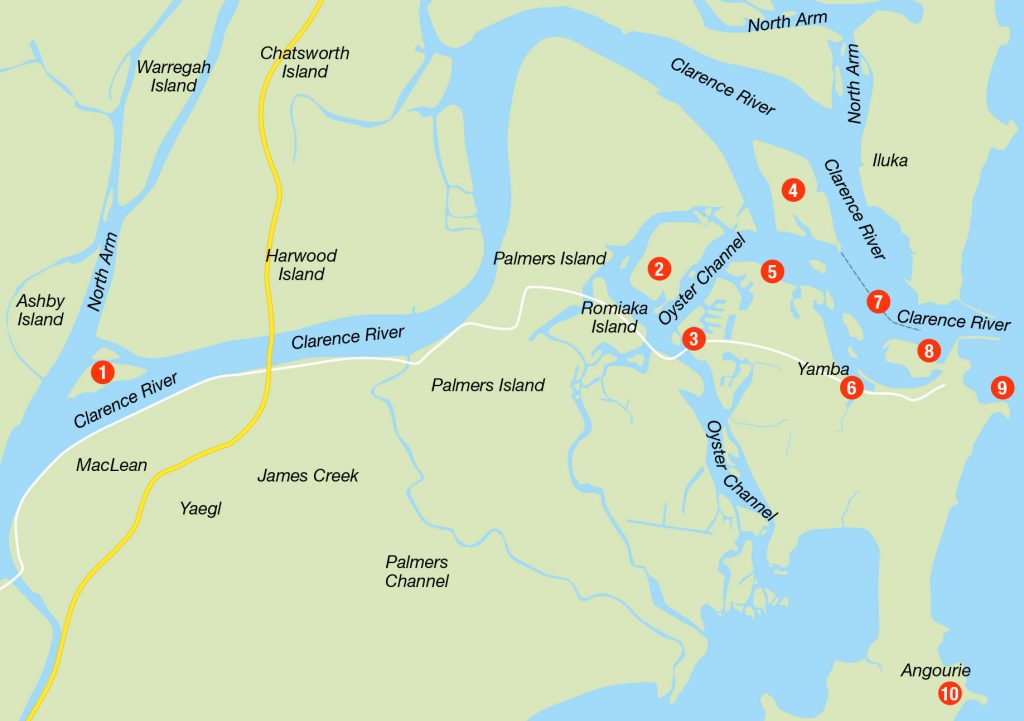
1 : Ulgundahi Island
2 : Thorny Island
3 : Oyster Channel Bridge
4 : Freeburn Island
5 : Yamba Shores Tavern
6 : Township and Marina
7 : Middle Wall
8 : Whiting Beach
9 : Lover’s Point
10 : Angourie Blue Pool
To keep up with Rupe’s fishing adventures or misadventures, follow along on Facebook and Instagram.

